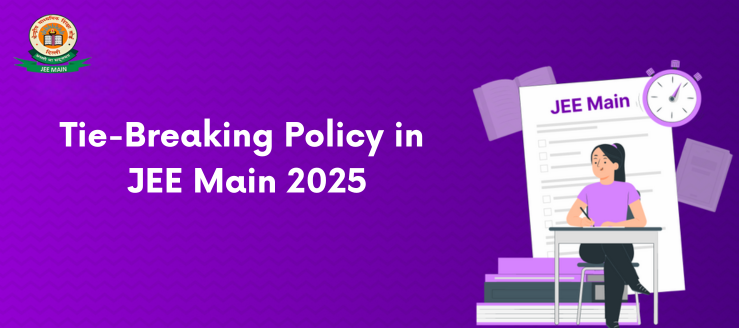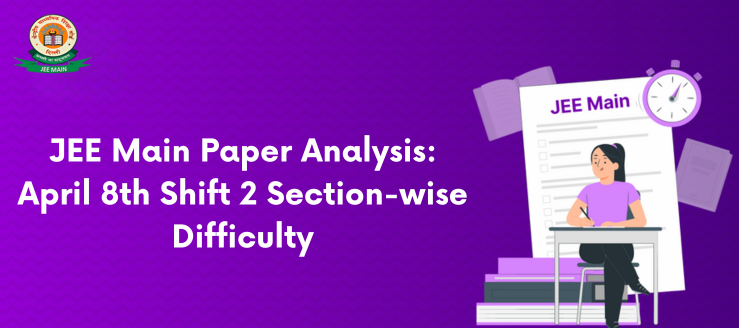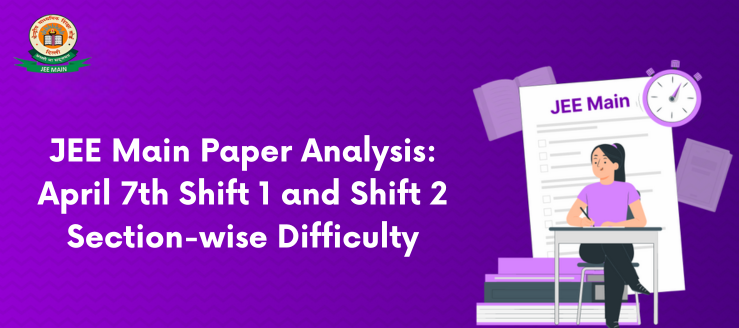
The Joint Entrance Examination (JEE) Main is one of the most competitive exams in India, and securing a high rank can be challenging. However, in some cases, more than one candidate may score the same marks in JEE Main. This raises an important question how are ranks assigned when two or more candidates achieve the same marks? To address such scenarios, the National Testing Agency (NTA) has employed a tie-breaking policy that ensures a fair ranking system. This article will explain the JEE Main tie-breaking policy in detail, including the criteria and procedures used to resolve ties between candidates.
What is a Tie Breaking Policy in JEE Mains?
A tie in JEE Mains happens when two or more candidates get the same score in the JEE Mains 2025 exam. Marks play a crucial role in your admission process and they can make or break your chances of admission to prestigious institutions like IITs, NITs etc. Hence a clear, fair, and transparent mechanism is required to avoid these discrepancies. The NTA’s tie-breaking policy outlines a set of criteria that helps assign ranks to candidates who score the same marks.
Order of the Tie-Breaking Policy for Paper 1
The tie-breaking criteria for JEE Main 2025 will be applied in the following order:
- Score in Mathematics: Candidates with high scores in Maths are given priority.
- Score in Physics: In case if tie still exists Candidates with high scores in physics are given priority.
- Score in Chemistry: In case if tie still exists Candidates with high scores in chemistry are given priority.
- The ratio of Incorrect to correct answers across all subjects: The ratio of Incorrect to correct answers is taken into account and the one with the lowest ratio is preferred.
- The ratio of Incorrect to correct answers in Maths: The ratio of Incorrect to correct answers in mathematics is taken into account and the one with the lowest ratio is preferred.
- The ratio of Incorrect to correct answers in Physics: The ratio of Incorrect to correct answers in physics is taken into account and the one with the lowest ratio is preferred.
- The ratio of Incorrect to correct answers in Chemistry: The ratio of Incorrect to correct answers in Chemistry is taken into account and the one with the lowest ratio is preferred.
- If a tie persists after all these steps, candidates will be given the same rank. This updated tie-breaking process streamlines the ranking system by eliminating age and application number as factors, ensuring a more equitable approach for candidates with identical scores.
Order of the Tie-Breaking Policy for Paper 2A (B.Arch)
The tie between candidates with the same Total NTA scores will be resolved in the following order:
- NTA score in Mathematics (Part-I)
- NTA score in Aptitude Test (Part-II)
- NTA score in Drawing Test
- Candidate with a lower proportion of incorrect answers to correct answers across all subjects
- Candidate with a lower proportion of incorrect answers to correct answers in Mathematics (Part-I)
- Candidate with a lower proportion of incorrect answers to correct answers in the Aptitude Test (Part II)
- If the tie persists even after these steps, candidates will be assigned the same rank.
Order of the Tie-Breaking Policy for Paper 2A(B.Plan)
The tie between candidates with the same Total NTA scores will be resolved in the following order:
If the tie persists even after these steps, candidates will be assigned the same rank.
- NTA score in Mathematics (Part-I)
- NTA score in Aptitude Test (Part-II)
- NTA score in Planning questions
- Candidate with a lower proportion of incorrect answers to correct answers across all subjects
- Candidate with a lower proportion of incorrect answers to correct answers in Mathematics (Part-I)
- Candidate with a lower proportion of incorrect answers to correct answers in the Aptitude Test (Part II)
- Candidate with a lower proportion of incorrect answers to correct answers in the Planning Based Test (Part III)
Also Read : Engineering Colleges in India
Frequently Asked Questions
1. What to do in case of my Application Rejection?
NTA releases dates for editing the application where candidates can make changes and apply again.
2. What is the 80/20 rule in JEE Mains 2025?
The 80/20 rule also known as the Pareto principle states that 80 per cent of the questions come from 20 percent of the topics in JEE Mains.
3. Which IIT is conducting JEE Mains 2025?
IIT Kanpur is conducting JEE Mains 2025.
4. Can I get NIT with 95% in JEE Mains 2025?
85% is a safe score to get NITs and candidates can easily get top NITs with 95%.
5. How many Subjects are in JEE Mains 2025?
JEE Mains 2025 consists of three subjects namely Mathematics, Physics and Chemistry.






